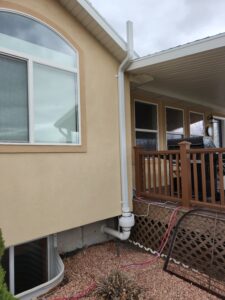Every home should be tested before, or soon after, you move in. Even homes built with radon-resistant construction features should be tested. If high radon levels are found, it is easier and costs less to reduce radon levels in homes that are built radon-resistant.
What do you know about Radon?
Breathing radon in your home can cause lung cancer
Radon is a naturally occurring radioactive gas released in rock, soil and water that can build up to dangerous levels inside any home; this means new and old homes, well sealed and drafty homes, and homes with or without a basement. Radon gas is odorless and invisible and the only way to know if your home has a radon problem is to test for it.
Breathing radon can increase your risk of lung cancer. Radon is the number one cause of lung cancer among people who do not smoke. It is the second leading cause of lung cancer for people who do. EPA estimates that radon causes more than 20,000 deaths from lung cancer each year in the U.S. If you smoke and your home has a high radon level, your risk of lung cancer can increase even more.
Radon has been found in every state-
Homes with high levels of radon have been found in every state. In fact, radon levels can vary greatly from home to home–even levels next door can be very different. Radon is measured in picocuries per liter of air (pCi/L), a measurement of radioactivity. In the United States, the average indoor radon level is about 1.3 pCi/L. The average outdoor level is about 0.4 pCi/L. The
U.S. Surgeon General and EPA recommend fixing homes with radon levels at or above 4 pCi/L. The EPA also recommends that people think about fixing their homes for radon levels between 2 pCi/L and 4 pCi/L.
You should test for radon
What do you know about Radon? Testing your house for radon is easy. If your house has a radon problem, it can be fixed. Fixing a radon problem reduces the risk of lung cancer for you and your family.
Call Total Radon Solutions today for a Free Radon Test!

You can fix a radon problem
What do you know about Radon? Total Radon Solutions can help you fix your radon problem. Radon levels can be lowered below the action level for mitigation, and generally go much lower than that.
Radon can be affordably mitigated, this is a small investment to reduce the risk of radon exposure in your home and its associated health risks.
We design the correct system for your size and type of home. We re-test after installing your mitigation system to ensure your levels have been lowered sufficiently. We also encourage you to do your own independent radon test. Radon should be re-tested every two years or after home improvement or remodeling that can effect radon levels.
- Building new homes with simple and cost-effective radon-resistant features can reduce radon entry.
- Every home should be tested before, or soon after, you move in. Even homes built with radon-resistant construction features should be tested. If high radon levels are found, it is easier and costs less to reduce radon levels in homes that are built radon-resistant.
Request a Free Test today!
435-250-4049
